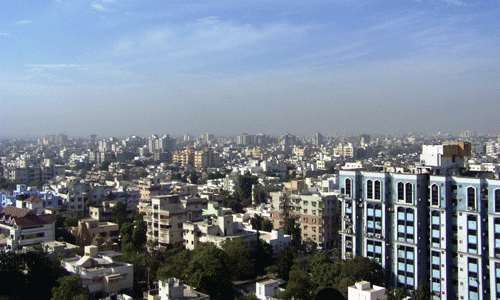By: Ravi Sinha
 Track2Realty Exclusive: Manoj John, VP, Corporate Planning & Strategy, RNA Corps maintains there is a correlation between cost of FSI and the nature of development that is viable given the high cost of land with limited development potential. If more can be built on the same land, the cost of land attributable to the project, which is as high has 50 to 80 per cent of project cost would come down. Hence, it would be viable for the developer to build residential projects at lower cost and hence make it more affordable.
Track2Realty Exclusive: Manoj John, VP, Corporate Planning & Strategy, RNA Corps maintains there is a correlation between cost of FSI and the nature of development that is viable given the high cost of land with limited development potential. If more can be built on the same land, the cost of land attributable to the project, which is as high has 50 to 80 per cent of project cost would come down. Hence, it would be viable for the developer to build residential projects at lower cost and hence make it more affordable.
“In a city like Mumbai affordable housing is ticket size of 25 to 50 lacs, and EWS housing is 10 to 25 lacs. I believe that if the cost of FSI can come down to one-fourth of what it is today, then it is viable for developers to build houses within city limits that can be sold for about 4000 to 5000 psf. Today these rates exist in locations 30 to 40 kms away from the city,” says John.
However, Devang Varma, Director, Omkar Realtors & Developers has a caveat here. He says more often than not, the relaxations end up being exploited rather than put to good use like affordable housing. According to him, FSI relaxation is not likely since existing infrastructure is a major issue. Enhancement of infrastructure also looks to be a bleak possibility owing to Mumbai being already highly congested with higher possibility of inconveniencing the system more.
“There is nothing like ideal FSI. FSI is essentially a co-related function of population and the required infrastructure. With the current population of Mumbai one can see the current scenario which can be aptly described as Chaotic and nothing less. Hence, in a way FSI norms may not fall in the category of archaic with amendments already having been made vis-à-vis prevailing situations. No further increase in FSI can be and should be fathomed since that would lead to further degradation of life in Mumbai,” says Varma.
There is also a school of thought that people should be encouraged to move out to MMR regions by increasing FSI in MMR regions and enhancing infrastructure over there or encouraging township schemes.
A status quo is alarming as Mumbai which had an average FSI of 5 which over a period of time got reduced to 1.33 & 1. Lack of vision, concern of public good and scientific approach towards urban planning resulted in ignorance over the issue by the respective governments.
Now the government seems to be scared to take bold decisions as they may be blamed for being pro-builder policies. Since the majority of land available for development is with central, state and local governments, what government needs is to show a political will and take some steps in decongesting the city and creating more housing stock, within or outside the main city may depend on the policy framework .
Ajay Maken’s wishful statement has not been responded by the State Government so far. Urban planning experts also understand FSI relaxation is not as easy as making a statement at the conference.
Real estate may also not be unanimous over the ways & means of FSI relaxation or the shape of things to emerge in overall infrastructure development in Mumbai, but Union Minister for Housing & Poverty Alleviation has definitely set the tone for a debate on an issue which the sector always keeps pushing through its channel of policy advocacy.





